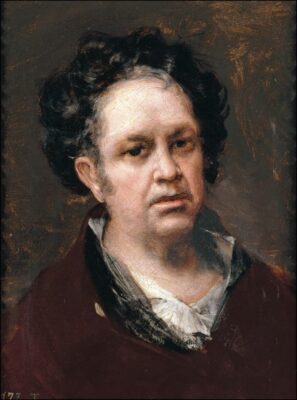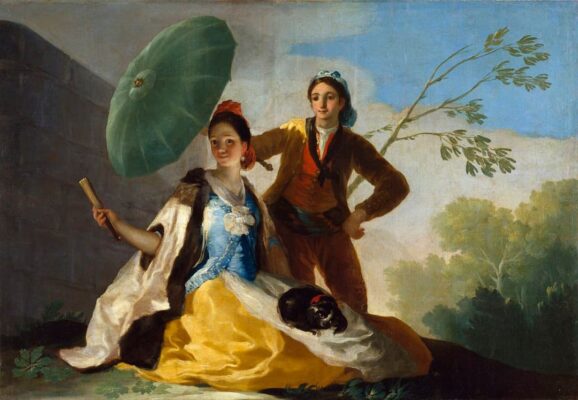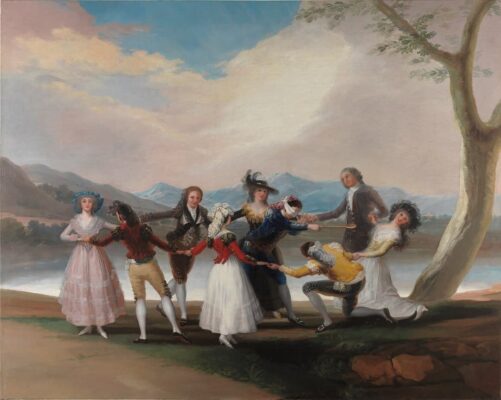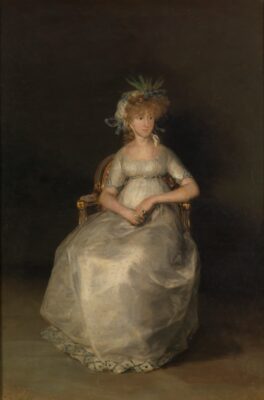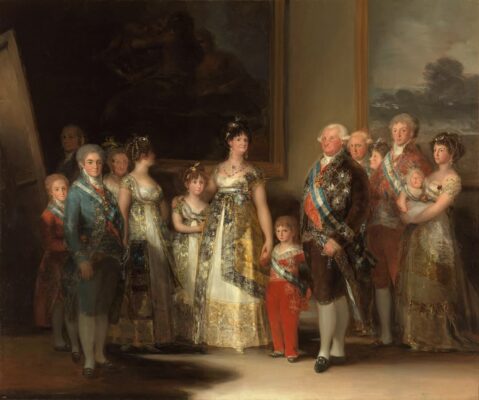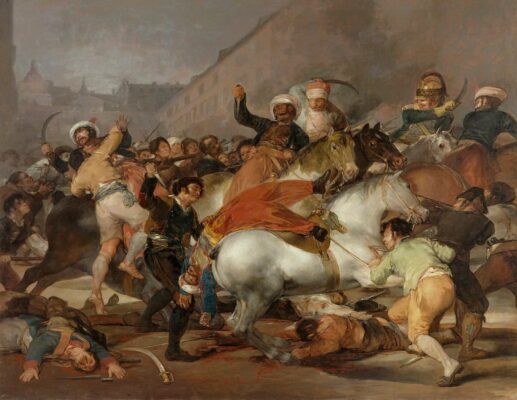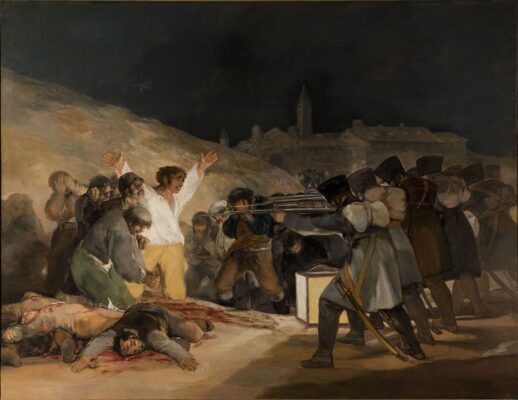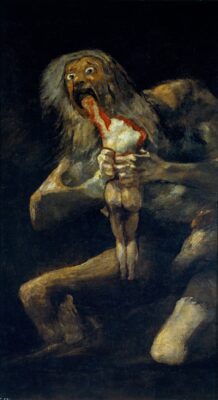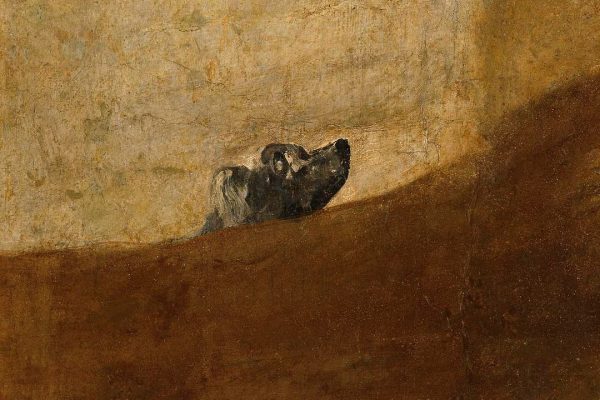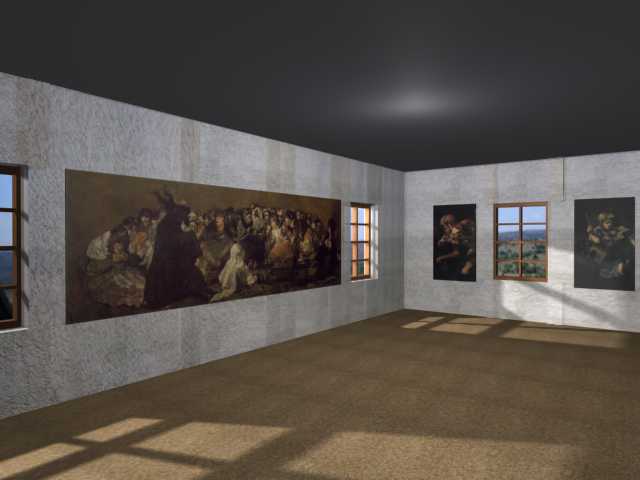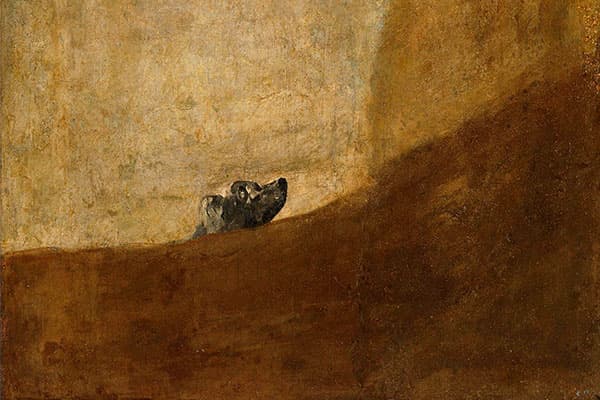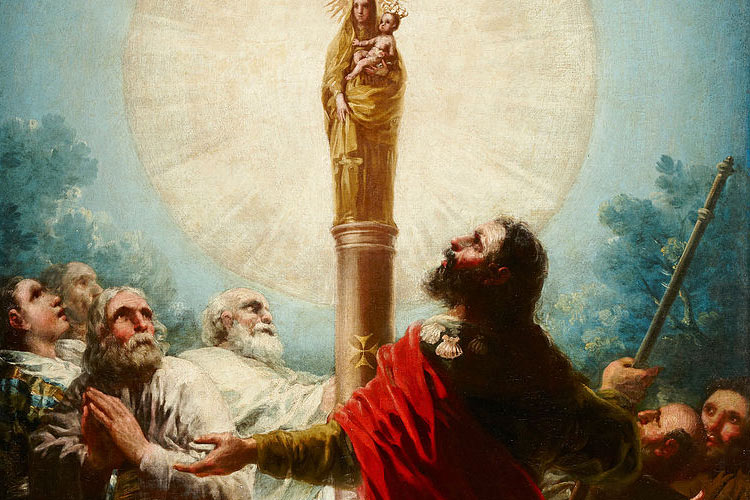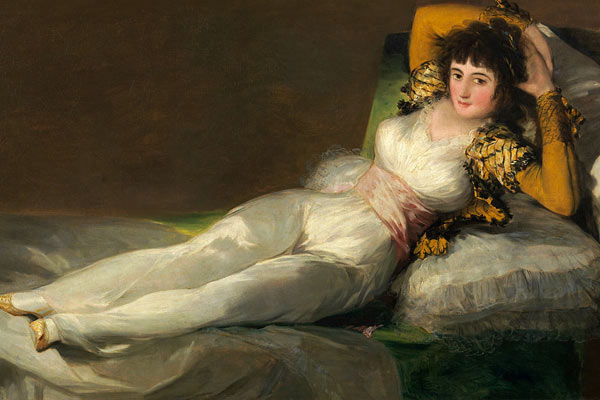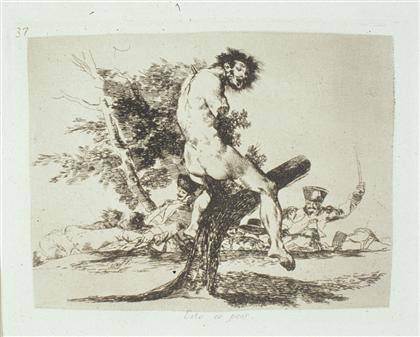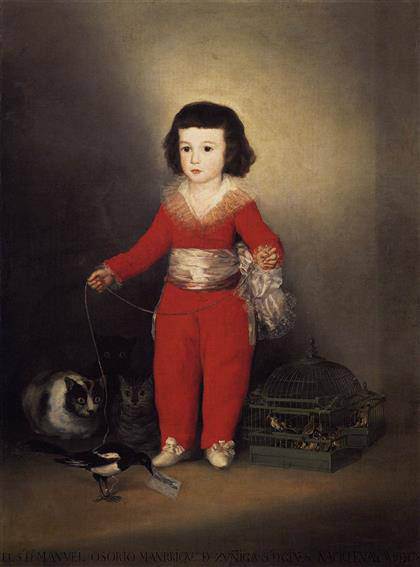Francisco de Goya
“The sleep of reason produces monsters”
Francisco de Goya
Goya is an enigma. In the whole History of Art few figures are as complex for studying as the brilliant artist born in 1746 in Fuendetodos, Spain. Enterprising and indefinable, a painter with no rival in all his life, Goya was the painter of the Court and the painter of the people. He was a religious painter and a mystical painter. He was classic and romantic. He was the author of the beauty and eroticism of the ‘Maja desnuda’ and the creator of the explicit horror of ‘The Third of May, 1808’. He was an oil painter, a fresco painter, a sketcher and an engraver. And he never stopped his metamorphosis
Image: Francisco de Goya: “Self portrait”, 1815. Oil on canvas, 45,8 x 35,6 cm
“There are many different Goyas,” wrote Nigel Glendinning. “The Goya who was a friend of the ‘ilustrados’ or a king’s painter does not seem to be the same as the Goya who was a lover of popular culture or a defender of the people. He expressed himself in different ways and used different techniques” (Nigel Glendinning, “Francisco de Goya”, 1993). Goya, ambitious and unpredictable, was inspired by earlier masters such as Velázquez and Tiepolo, and in turn had a decisive influence on modern artists such as Pablo Picasso.
Francisco de Goya y Lucientes was born in 1746 in Fuendetodos, Aragón. At the age of 13 he entered the Academy of Drawing in Zaragoza. From his juvenile stage, while still a teenager, two works of religious themes can be attributed to him: “Assumption of the Virgin and Saint Iñigo” and “Consecration of St. Aloysius Gonzaga as Patron of Youth“. Both works still present a late Baroque style. It is known that at the age of twenty he travelled to Italy, where he studied the work of masters such as Raphael and Rubens. In Rome, he painted “Hannibal the Conqueror contemplates Italy from the Alps for the first time” (now in the Prado Museum), a work that represents a great leap from his previous paintings.
On his return to Spain, he was commissioned to paint a fresco on a ceiling of the Basilica of Our Lady of Pilar in Zaragoza, the colossal “The Adoration of the Name of God“, a 15 meters long work. This commission was followed by other important works, such as the pictorial cycle of the Life of the Virgin in the Carthusian monastery of the Aula Dei. With his fame growing, in 1775 he was contacted by the painter Anton Raphael Mengs to work at the Royal Court in Madrid.
Francisco de Goya: “El quitasol”, 1777. Oil on canvas, 104 x 152 cm. Museo del Prado, Madrid ·· Francisco de Goya: “La gallina ciega”, 1789. Oil on canvas, 269 x 350 cm. Museo del Prado, Madrid.
In his beginnings in Madrid, Goya mostly painted tapestry cartoons, a medium in which he produced interesting works like “La gallina ciega” (1789) or his famous “El quitasol” (1777), now exhibited in the Prado Museum. In 1780, he was appointed member of the prestigious Academy of San Fernando, which allowed him to receive commissions from prominent members of Madrid society of the time. From this decade are “The family of Infante Don Luis” from the Magnani-Rocca Foundation, “The Marquise of Pontejos” from the National Gallery of Washington, and “The Dukes of Osuna and their children” from the Prado Museum.
In the following decade, with the rise to power of Manuel Godoy, Goya received fewer commissions, living for a time in Zaragoza and Valencia. He fell ill, and during these years he created works of small size but great originality, such as “Naufragio” (“Shipwreck”) (1793) or “Corral de locos” (1794), which in a way seem to anticipate the famous “Black Paintings” that he painted years later.
Francisco de Goya: “The Countess of Chinchón”, 1800. Oil on canvas, 216 x 144 cm. Museo del Prado, Madrid ·· Francisco de Goya: “The Family of Charles IV”, 1800. Oil on canvas, 280 x 336 cm. Museo del Prado, Madrid
He returned to Madrid in the mid-1790s, continuing with the portraits of the nobility begun in the previous decade. From this period are works such as “The Duchess of Alba” from the Alba Collection or “Mariana Waldstein, Marchioness of Santa Cruz” from the Louvre, culminating in the sensational “The Countess of Chinchón“, acquired in 2000 by the Spanish State for about 24 million euros. An important moment in the artist’s career occurred at the end of this decade, with the publication of his series of engravings “Los Caprichos“, images of extraordinary fantasy that are still shocking nowadays. “Goya, in reality a freethinker, as satirical as he was dramatic, had allowed himself to cross the limits which, at the end of the 18th century, surrounded art. His ‘Caprichos’ (…) presented human beings bordering on beasts, visions of the gallows and of sorcery (…) The artist’s intention (…) so dark and sibylline at times that it advocates aspects of 20th century surrealism” (J. Gudiol Ricart, “Francisco Goya”, 1981). Also from this period is “El Aquelarre” (1798), preserved in the Lázaro Galdiano Museum in Madrid.
From 1800, Goya received his most famous commissions, especially “The Family of Charles IV“, a perfectly executed painting now in the Prado Museum. He also painted “La maja vestida“, continuing “La maja desnuda” which he had begun in the previous decade. But the prosperity of this stage was cut short at the end of the decade, with the beginning of the Spanish War of Independence. It was then that he produced his most important series of engravings, “The Disasters of War“.
Francisco de Goya: “The Second of May 1808 in Madrid (The Charge of the Mamelukes)”, 1814. Oil on canvas, 268 × 366 cm, Museo del Prado, Madrid ·· Francisco de Goya: “The Third of May 1808 in Madrid (The Firing Squad of the Third of May)”, 1814. Oil on canvas, 268 × 366 cm, Museo del Prado, Madrid
Goya, who had supported the liberals, found himself in difficulties during the Absolutist Restoration. He produced two patriotic paintings, two of his most famous works and icons of universal Romantic painting: “The Second of May 1808 in Madrid“ (sometimes called “The Charge of the Mamelukes“) and the impressive “The Third of May in Madrid” (“The Firing Squad of the Third of May“). In these works, Goya “does not paint a realistic picture, but a religious canvas: he canonizes the people who free themselves from the tyrant, thus creating a new national icon of Spanish resistance” (Rose-Marie & Rainer Hagen, “Goya”, 2005). He also completed another important series of engravings, “La Tauromaquia” (“Bullfighting”).
In 1819, Goya moved to an estate on the outskirts of Madrid -later known as the “Quinta del Sordo”- and began to paint on its walls – previously decorated with floral motifs – a series of eerie paintings populated with witches and frightening scenes such as the famous “Saturn devouring his son”. Why did Goya decide to change the previously cheerful decoration for the disquiet and even horror of the “Black Paintings“? We do not know the reasons for this decision. What we do know, in spite of the damages suffered when these frescoes were transferred to oil, were the results. About these paintings we recommend reading the complete article on theartwolf.com about the Black Paintings, which includes infographics on the original layout of these paintings.
Francisco de Goya: “Saturn Devouring a Son”, 1819-23. Mural painting transferred to canvas, 146 × 83 cm, Museo del Prado, Madrid ·· Francisco de Goya: “The Dog”, 1819-23. Mural painting transferred to canvas, 131.5 × 79.3 cm, Museo del Prado, Madrid
In 1824, after the invasion by the “Hundred Thousand Sons of St. Louis” and the imminent repression against the liberals, Goya moved to Bordeaux, where he painted “The Milkmaid of Bordeaux” (c.1827, Museo del Prado). He died in 1828, being buried in the French city, although his remains were transferred to Spain in 1899. Today, a large part of his works is in the Prado Museum, where he is, along with Velázquez, the main attraction of the museum.
G. Fernández · theartwolf.com
Masterworks by Francisco de Goya
More about Francisco de Goya
Follow us on:

